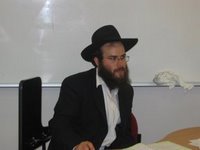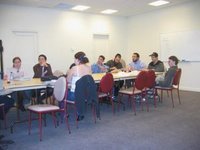This week’s parsha outlines the important difference between modes of written communication.
The most common method of executing written communication is by using either a writing instrument or printing device (anyone own a typewriter?) to lay down letters which form words on to a sheet of paper. I suppose electronic written or text communication is similar in that it involves the encoding of pixels on to a screen to form legible characters that are displayed and optionally printed as well.
Whether we talk about conventional writing or electronic digital text transmission (pardon me for being more familiar with the former), either way we end up with ink on paper, or pixels on a computer screen. The end result is communication arising from a visible substance (ink) bonding to a substrate material (paper) to form letters, words, and sentences. I strongly suspect my “multiple role” model of achieving written communication holds true for electronic means as well, where we have different elements combining to display text.
There is however a vastly different method of representing letters and text, and the name of our parsha gives us a hint as to what the alternative method is.
When we take the substrate material referred to earlier and carefully, precisely remove fragments of that substrate base in the shape of letters, we end up with legible text formed out of only the one material; in other words, we have engraved words that involve no separate pigment being bonded to a different material.
In the first method of writing we require two distinct entities to form the message, and as a result of there being distinct entities, we can separate and thus remove one from the other. This “loosely coupled” arrangement has halachic ramifications. (See Talmud Bavli Tractate Moed Katan 26A).
I can’t really define the engraving process as being “tightly coupled”, because here there is no coupling at all – the communicated text is really one and the same with its base. One simply cannot remove the letters without also removing the substrate. (We could fill in the letters, but really the letters remain, we are just covering them up.)
When our Torah uses the word “Chukas”, which normally means statute, it is not merely informing us about a specific type of Mitzvah that exists, but just as importantly, how we have to relate to that Mitzvah. The Mitzvah is not to be regarded as an adjunct to our lives, to our daily activities, but is to become part and parcel of our very being. We are not substrates to Hashem’s Mitzvos, able to peeled apart from them, chas v sholom; we are one with Torah and its teachings – it is an inseparable part of our existence.
We cannot live a life “loosely coupled” with Torah, a two-tiered on and off approach of Torah one moment and then change over to mundane “neutral” mode the next.
We must conduct ourselves in a manner of expressing unity with Torah and Mitzvos, channelling all our energy in this direction. Torah and Mitzvos should not be regarded and treated as an “aspect” of our lives, but as life itself.
Wishing everyone Shabbat Shalom.
Thank you for your comments, feedback and suggestions
- Please click here to send us your comments, feedback or suggestions
- There are currently "3719" members.
- Please note that the underlined bullets on the left side of this page are links, which are updated weekly.
- Contact Us
A current Insight:
When you give for a worthy cause, it is really only a loan and G-d Himself is the guarantor. Furthermore, the more you give, the more you get. I don't mean this figuratively. I say so you will test it and see for yourself
Friday, June 22, 2007
This week’s parsha -From the desk of Rabbi Z. Telsner Dayan, Yeshivah Centre
Labels:
Weekly Torah Lessons



No comments:
Post a Comment